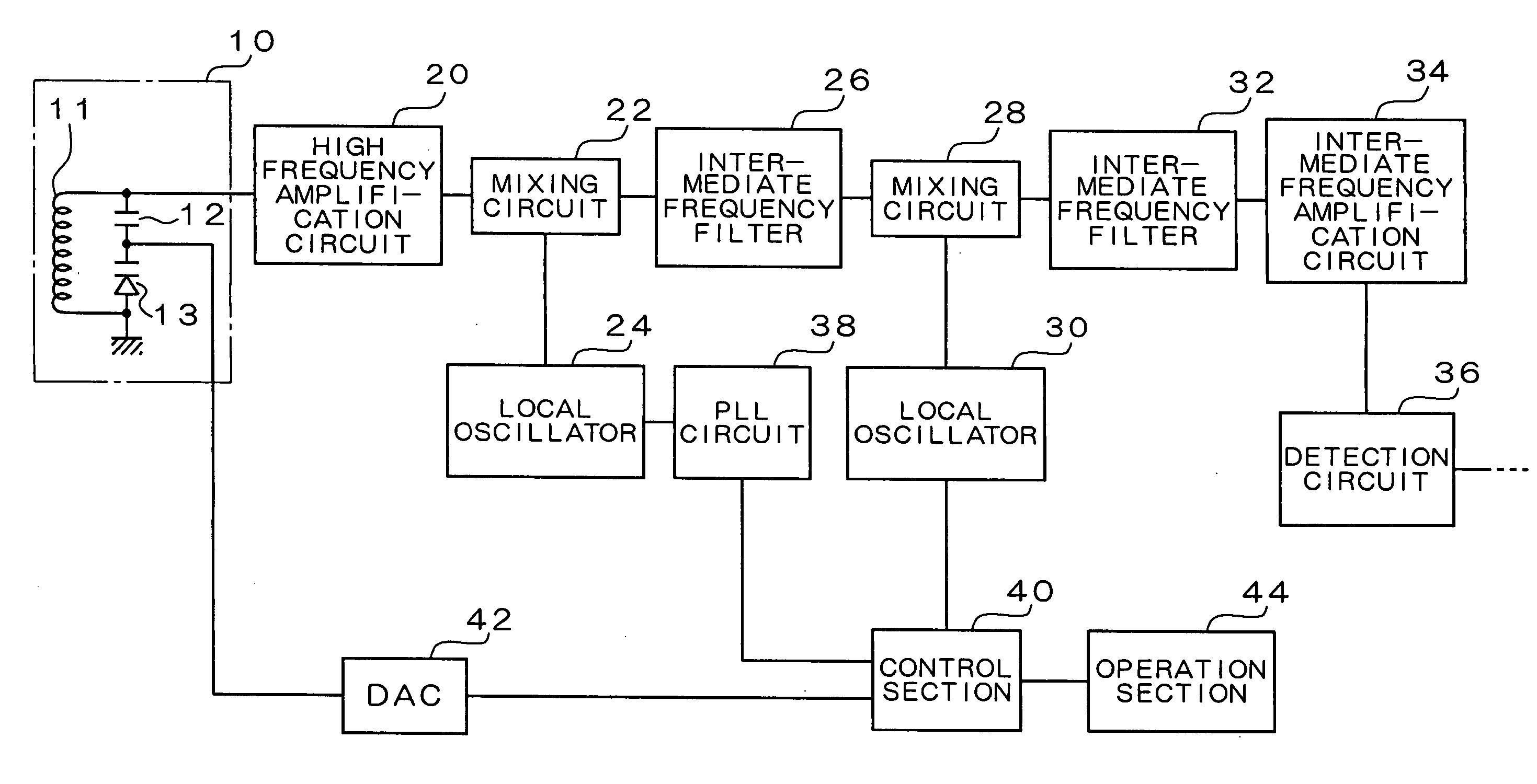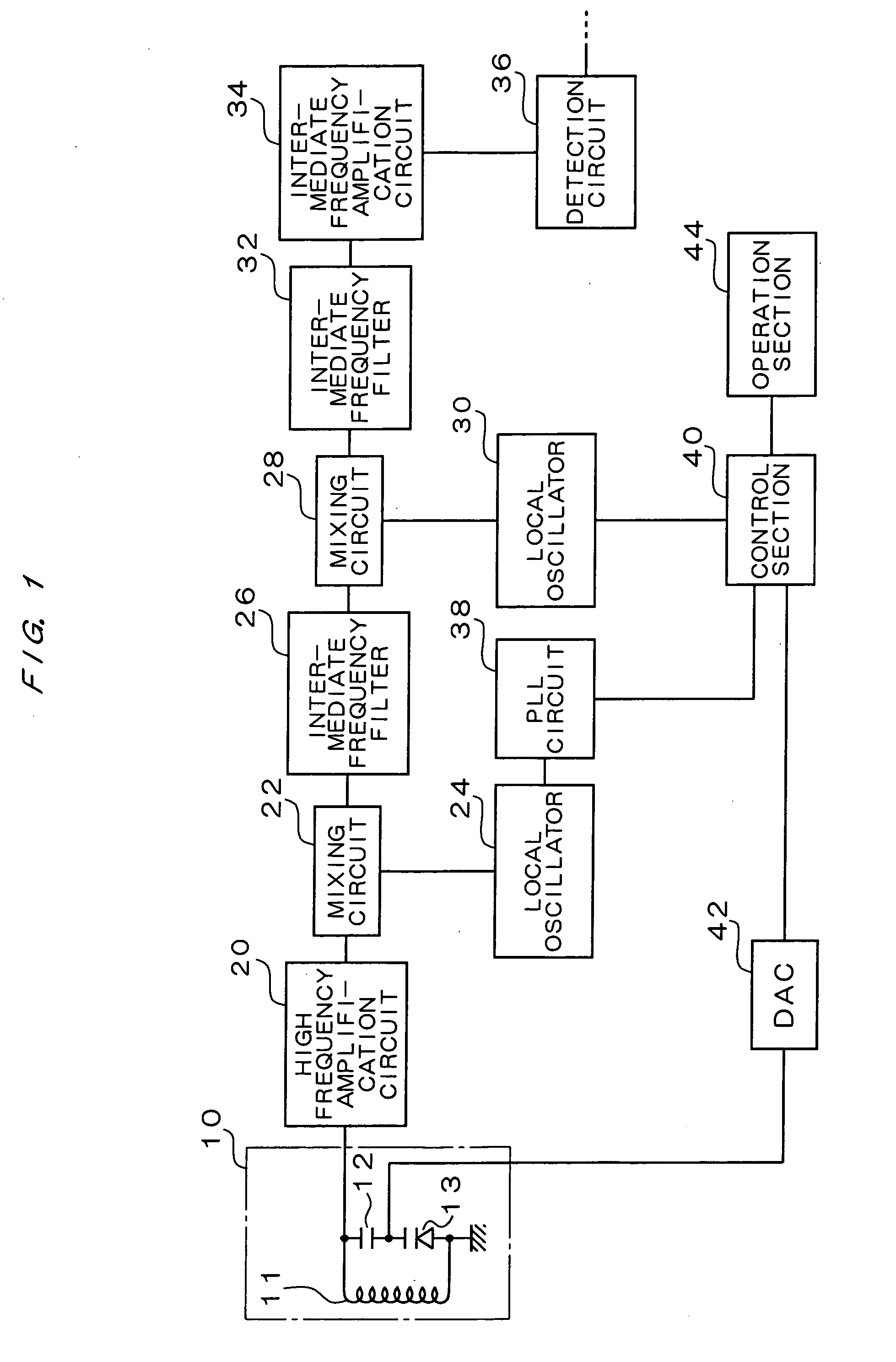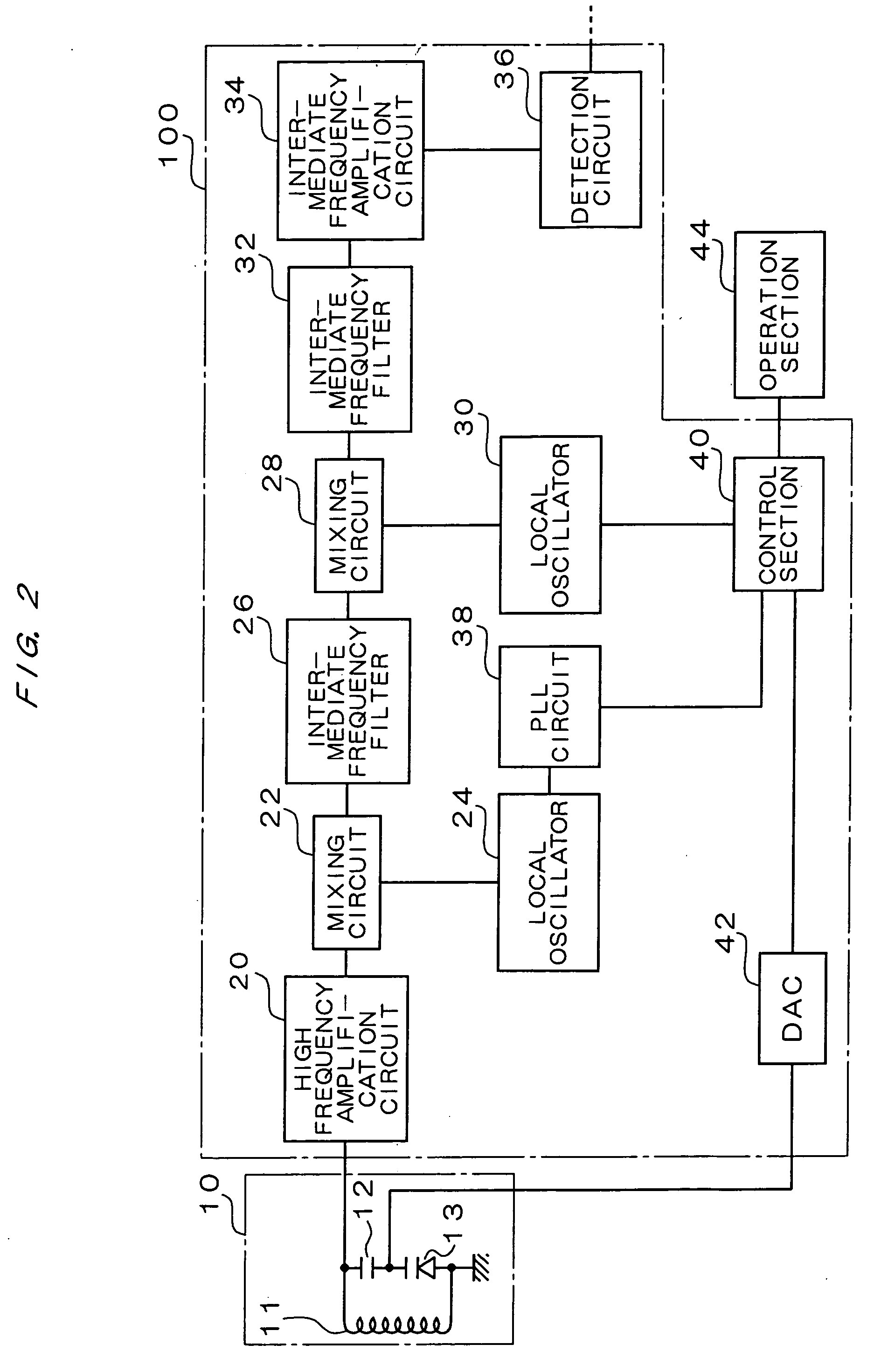Receiver of double conversion system
a double conversion and receiver technology, applied in the direction of multi-frequency-changing modulation transference, multi-frequency-changing modulation transference, resonant circuits using central processing units, etc., can solve the problems of increasing unwanted components, antennas, etc., to facilitate the change of output voltage, reduce the number of components, and reduce the cost
- Summary
- Abstract
- Description
- Claims
- Application Information
AI Technical Summary
Benefits of technology
Problems solved by technology
Method used
Image
Examples
Embodiment Construction
[0021] Hereafter, a receiver of an embodiment in which a double conversion system according to the present invention is adopted will be described with reference to the accompanying drawings.
[0022]FIG. 1 is a figure showing a configuration of a receiver according to a first embodiment. The receiver of double conversion system according to the first embodiment shown in FIG. 1 is constituted by including an antenna tuning circuit 10, a high frequency amplification circuit 20, mixing circuits 22, 28, local oscillators 24, 30, intermediate frequency filters 26, 32, an intermediate frequency amplification circuit 34, a detecting circuit 36, a PLL circuit 38, a control section 40, a DAC (digital-analog converter) 42, and an operation section 44.
[0023] The antenna tuning circuit 10 is constituted by a tuning coil 11, a capacitor 12 and a variable-capacitance diode 13. The tuning coil 11 and the variable-capacitance diode 13 are connected in parallel, and their parallel resonance frequency...
PUM
 Login to view more
Login to view more Abstract
Description
Claims
Application Information
 Login to view more
Login to view more - R&D Engineer
- R&D Manager
- IP Professional
- Industry Leading Data Capabilities
- Powerful AI technology
- Patent DNA Extraction
Browse by: Latest US Patents, China's latest patents, Technical Efficacy Thesaurus, Application Domain, Technology Topic.
© 2024 PatSnap. All rights reserved.Legal|Privacy policy|Modern Slavery Act Transparency Statement|Sitemap



